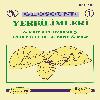A multi-phase intrusion around the Gümüşhane village (Artvin) and associated mineralisation types: A geologic and geochemical approach
Gümüşhane yöresinde Eosen yaşlı bir mikrodiyorit Orta Eosen öncesi yaşlı bütün birimleri keserek yerleşmiştir. Intrüzyon kompleks yapılı olup, bileşimleri kuvarslı andezitten dasite kadar değişen çok fazlı porfiri kütleler ona eşlik eder. İntrüzyonun merkezi kesiminde çok iyi gelişmiş bir alterasyon zonu bulunur. Serizitik ve potasik alterasyonun görüldüğü bu zonda porfiri, tip ve karbonat ornatım tip cevherleşmeler vardır. Porfiri tip cevherleşme kuvars porfir ve kuvarslı andezit pofirlerle ilişkili olup, saçınımlar ve damarcıklar halindedir. Pirit çok yaygındır; kalkopirit, ve az oranda altın, sfalerit, sülfotuzlar, molibdenit, bornit ve manyetit ona eşlik eder. Yüzey örnekleri ve sondaj karotlarının kimyasal analizlerinden elde edilen sonuçlara göre asıl cevherli zonun Au içeriği I ppm, Cu içeriği ise % 0.3 dür, ki bu porfiri Cu-Au türü bir cevherleşmenin varlığına işaret eder. Karbonat ornatım tip cevherleşme kireçtaşı blokları içinde gelişmiştir. Cevherleşme kireçtaşı-mağmatik kayaç dokanağında yerleşmiş olup, Fe, Mn, Cu, Zn, Au ve Ba ca zenginleşmiştir. Cevher için karakteristik bir örnek Fe ve Mn oksitler, pirit, kalkopirit, sfalerit, az oranda bornit, sülfotuzlar, altın ve ikincil mineraller halinde %31.7 FeO, %4.7 MnO, %0.3 Cu, %3.I Zn, 203 ppb Au ve 660 ppm Ba içerir. Hidrotermal alterasyon kütle değişim hesaplamaları iki tür cevherleşme arasında çok yakın bir jenetik ilişkinin varlığını göstermektedir. Cevherli kireçtaşının çevresindeki dasit MnO ve Zn bakımından çok fakirleşmiş olup, fakirleşme oranı dokanak zonundan dasitin iç kesimlerine doğru azalma gösterir. Porfiri kütleden yıkanmış olan MnO ve Zn rekristalize kireçtasına ilave edilerek onu cevherleştirmiştir. Az altere kireçtasına göre bu zenginleşme MnO için 24 kat, Zn için ise 164 kattır. Au ve Cu dokanak boyunca her iki birimde de artış gösterir.
Gümüşhane çevresinde çok fazlı bir intrüzyon ve bununla ilişkili cevherleşme tipleri; jeolojik ve jeokimyasal bir yaklaşım
A microdiorite intrusion crops out around the Gümüşhane village and intrudes all the pre-Middle Eocene aged lithologies. It is accompanied by repeated pulses of magmatic activities resulting in a number of porphyry phases varying from quartz andesitic to dacitic composition. The central portion of the intrusion is characterised by a well developed hydrothermal alteration zone. Sericitic alteration is dominant but potassic alteration is also observed and is characterised mainly by secondary feldspars, biotites, quartz and pyrite veinlets. Two main types of mineralisation are associated with this alteration zone. A porphyry- and carbonate replacement type mineralisation. The former is confined to the quartz- and quartz-andesitic porphyry plugs and is in the form of disseminations and quartz veinlets. Pyrite is ubiquetous and is accompanied by chalcopyrite, and lesser sphalerite, sulphosalts, molybdenite, bornite and magnetite. The chemical analyses of surface and drill core samples yield up to 1 ppm Au, and 0.3 % Cu implying a Cu-Au porphyry mineralisation. Replacement type mineralisation is restricted to recrystallised carbonate units occurring as discrete blocks within the dacite. The mineralisation is localised along the carbonate rock and intrusive contacts and is enriched in Mn, Cu, Zn, Au and Ba. A characteristic mineralised sample contains 32% FeO, 4.7% MnO, 3.1% Zn, 0.3 % Cu, 203 ppb Au and 660 ppm Ba present in Fe- and Mn oxides, pyrite, chalcopyrite, sphalerite and lesser bornite, sulphosalts, gold and supergene minerals. Hydrothermal alteration mass change calculations reflect the imminent relationship between the two types of mineralisation. The lithologies near the mineralised limestone blocks are highly depleted in MnO and Zn and the intensity of depletion is reduced away from the contact further into the dacite. The elements leached are added to the recrystallised limestone block in which MnO and Zn show a 24-fold and 164-fold increases respectively over the least altered limestone. Au and Cu are enriched along the contact both in the porphyry plug and in the limestone implying that they may have been derived either from other lithologies and the magma itself.
